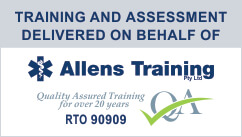HLTAID004 Northern Beaches
(HLTAID004) What skills and knowledge will I get from this course?
Performance Evidence
The candidate must show evidence of the ability to complete tasks outlined in elements and performance criteria of this unit, manage tasks and manage contingencies in the context of the job role.
There must be demonstrated evidence that the candidate has completed the following tasks at least once in line with state/territory regulations, first aid codes of practice, ARC guidelines and workplace procedures:
- located and interpreted workplace policies and procedures
- conducted a hazard assessment and identified strategies to minimise risk
- demonstrated safe manual handling techniques
- assessed airway, breathing and responsiveness of casualty
Performed at least two minutes of uninterrupted CPR on an infant, a child and an adult resuscitation manikin placed on the floor, demonstrating the following techniques on each:
- checking for response and normal breathing
- recognising abnormal breathing
- opening and clearing the airway
- using correct hand location, compression depth rate in line with the ARC recommended ratio of compressions and ventilations
- acting in the event of regurgitation or vomiting
- following single rescuer procedure, including the demonstration of a rotation of operators with minimal interruptions to compressions
- followed prompts of an Automated External Defibrillator (AED)
Conducted a verbal secondary survey
Applied first aid procedures for the following:
- allergic reactions
- anaphylaxis
- asthma
- basic wound care
- severe bleeding
- burns
- cardiac arrest
- choking and airway obstruction
- convulsions, including febrile convulsions
- envenomation (using pressure immobilisation)
- epilepsy and seizures
- fractures, sprains and strains (using arm slings, roller bandages or other appropriate immobilisation techniques)
- head injuries
- poisoning
- respiratory distress
- shock
Followed workplace procedures for reporting details of the incident, including:
- providing an accurate verbal report of the incident
- completing an incident, injury, trauma and illness record
- responded to at least three simulated first aid scenarios contextualised to the candidate’s workplace/community setting, and involving infants and children of varying ages.
Knowledge Evidence
The candidate must be able to demonstrate essential knowledge required to effectively complete tasks outlined in elements and performance criteria of this unit, manage tasks and manage contingencies in the context of the work role. This includes knowledge of:
- state/territory regulations, first aid codes of practice and workplace procedures including:
- ARC Guidelines for provision of CPR and first aid to infants, children and adults
- guidelines from Australian national peak clinical bodies
- safe work practices to minimise risks and potential hazards
- first aid requirements for services under the Education and Care Services National Law
Infection control principles and procedures
Requirements for currency of skill and knowledge
Legal, workplace and community considerations, including:
- need for stress-management techniques and available support following an emergency situation, including the psychological impact on children
- duty of care requirements
- respectful behaviour towards a casualty
- own skills and limitations
- consent, including situations in which parental/caregiver consent is required
- privacy and confidentiality requirements
- importance of debriefing
Considerations when providing first aid including:
- airway obstruction due to body position
- appropriate duration and cessation of CPR
- appropriate use of an AED, including placement of pads for adults and children aged older than 8 years
- specific considerations when using an AED on children aged between 1 and 8 years, including identification of AED with paediatric capability, paediatric voltage and use of paediatric pads
- chain of survival
- standard precautions and infection control
Principles and procedures for application of first aid in the following scenarios:
- abdominal injuries
- allergic reactions, including severe reactions
- anaphylaxis
- bleeding control
- burns
- cardiac conditions
- choking and airway obstruction
- cold and crush injuries
- diabetes
- dislocations
- drowning
- envenomation
- environmental impact (including hypothermia, hyperthermia, dehydration and heat stroke)
- epilepsy
- eye and ear injuries
- fractures
- head, neck and spinal injuries
- minor skin injuries
- needle stick injuries
- poisoning and toxic substances
- respiratory distress, including asthma and other respiratory conditions
- seizures
- shock
- soft tissue injuries
- unconsciousness, abnormal breathing or not breathing
Basic anatomy and physiology relating to:
- absence of normal breathing
- anatomy of the external chest
- specific anatomy of infant respiratory systems, including trachea, and implications for provision of CPR
- basic anatomical differences between adults and children, and the implications for provision of first aid
- normal clinical values for children
- physiology relating to response/consciousness
- symptoms and triggers of anaphylaxis
- symptoms and triggers of asthma
- upper airway anatomy and effect of positional change.
